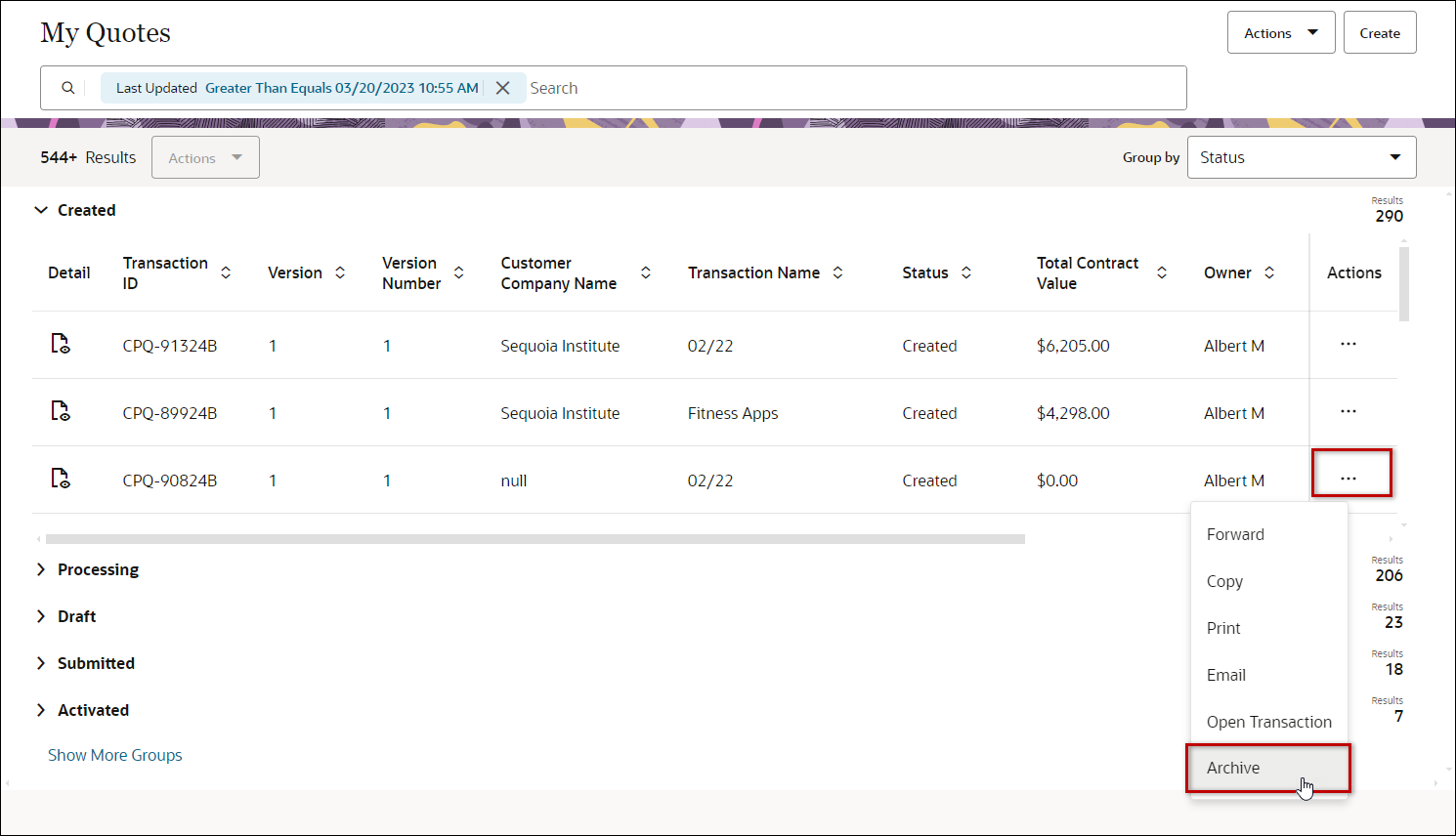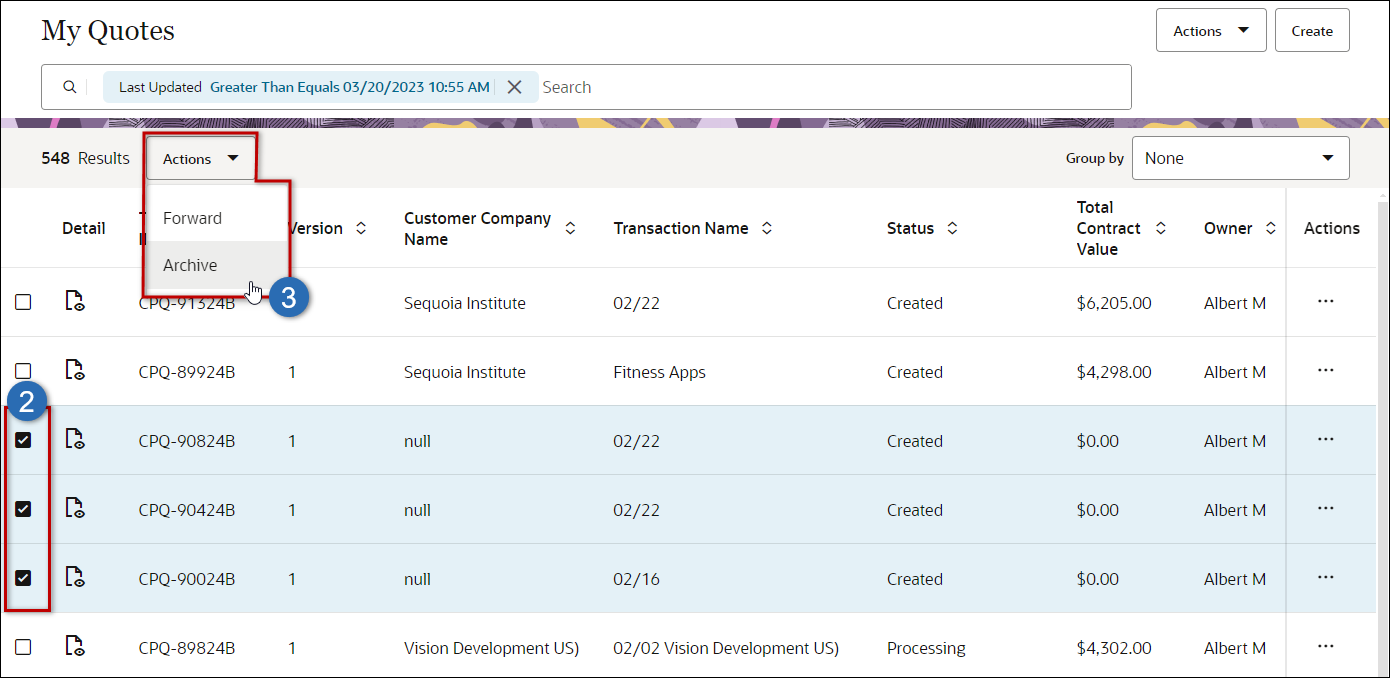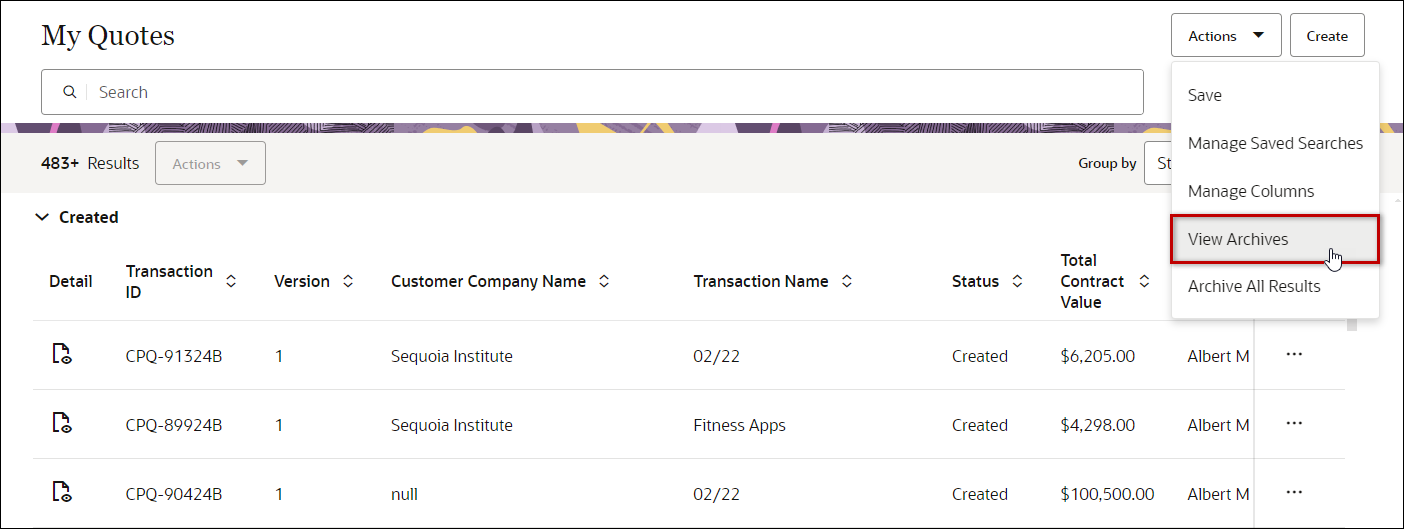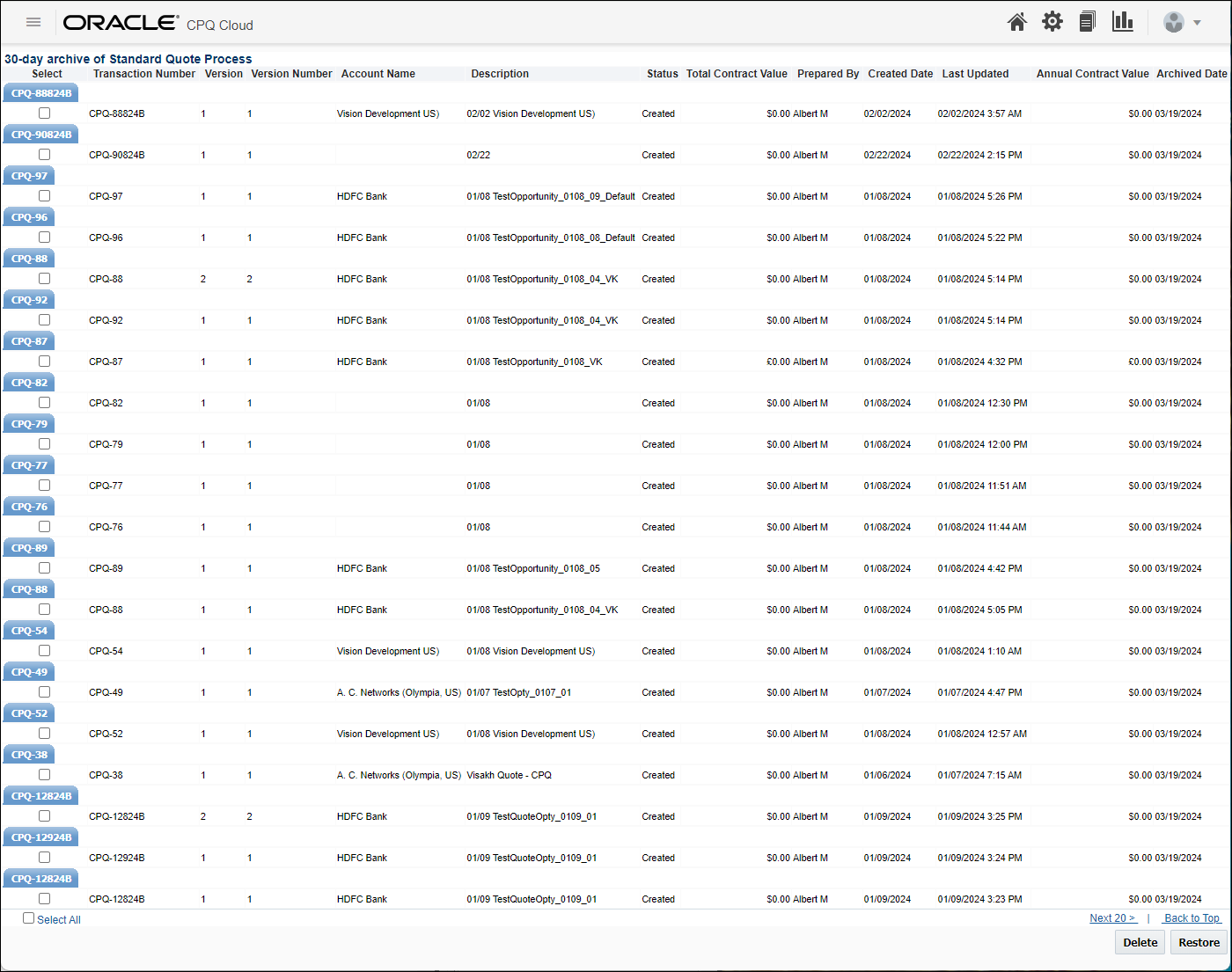Overview
The Quotes List page using Redwood design standards to enhance the user experience and align with other Oracle products. The redesigned Redwood UX supports existing functionality and provides additional usability improvements to the Quote List Page, such as, filtering, sorting, creating, and managing saved searches, etc. When enabled, the new Quotes List page replaces the existing legacy Transaction Manager. The navigation link URL for the existing legacy Transaction Manager is also updated to the new Quotes List URL.
Users click on the Quotes List icon to access the new Quotes List page.
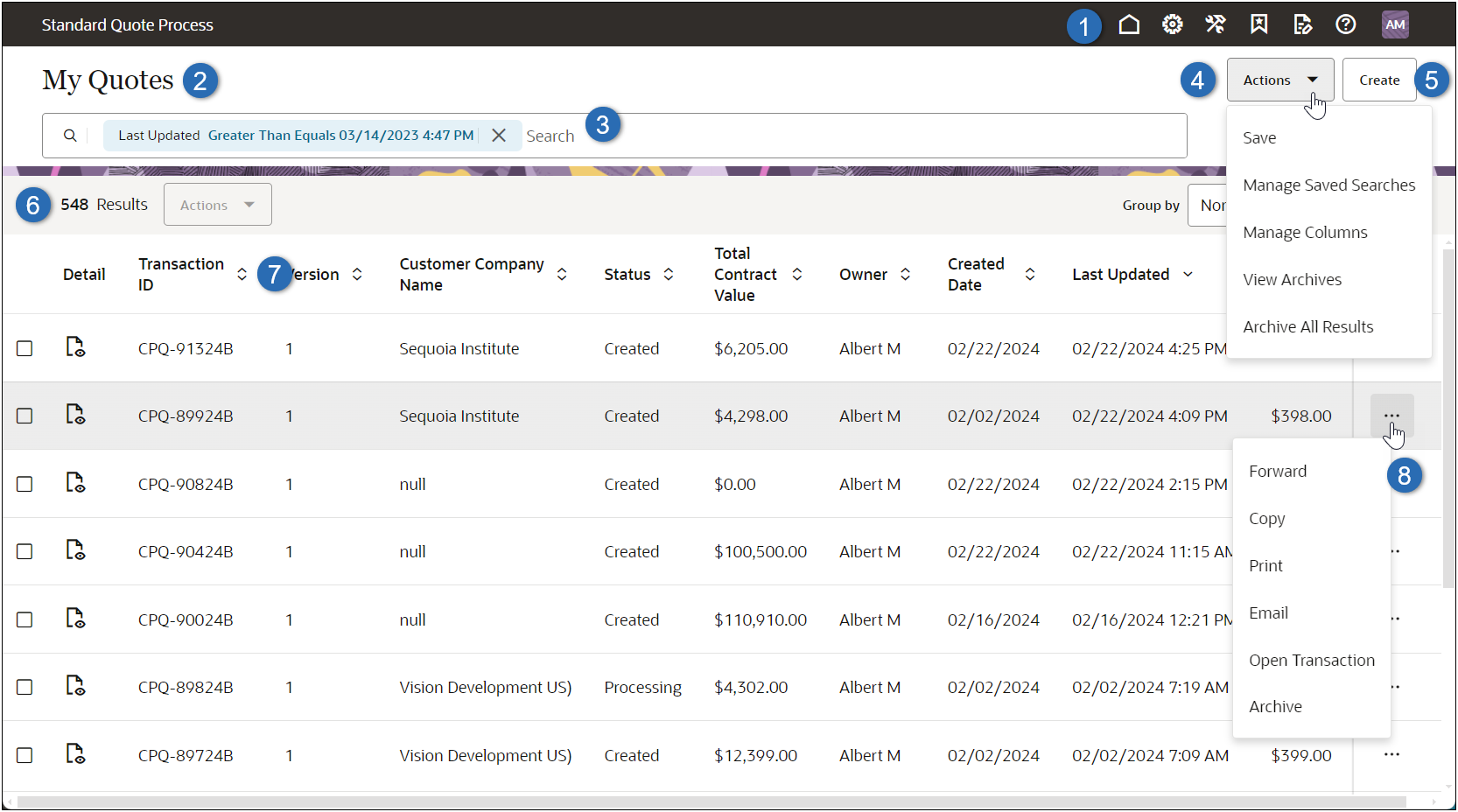
| Step | Description |
|---|---|
|
1 |
The navigation menu has been updated with a modern redwood design. Users will notice the updated navigation menu at the top of the page, providing seamless access to different sections. |
|
2 |
The site default or user default saved search is displayed. |
|
3 |
Select a Saved Search or to define criteria for a custom search. |
|
4 |
Save the current list view to saved searches, Manage Saved Searches, Manage Columns, View Archives, or Archive All Results. The Manage Saved Searches interface allow users to view a list of available saved searches, assign default (user and site) saved search, control (visibility and read/write) access for saved searches, and delete saved searches. |
|
5 |
Create a new transaction. |
|
6 |
The Results field displays the number of transactions returned for the current search. |
|
7 |
Sort search results using the chosen column header. The displayed columns are determined by the Manage Columns action. The default columns are the ID # and Selected Currency, the other columns are populated the Data Columns for main document (e.g. Transaction) Commerce attributes. For more information, refer to Data Columns. |
|
8 |
Forward, Copy, Print, Email, Open Transaction, or Archive the selected transaction. Note: Archive options are only visible for administrators |
When multiple transactions are selected, users can access the results Actions to Forward or Archive multiple lines.
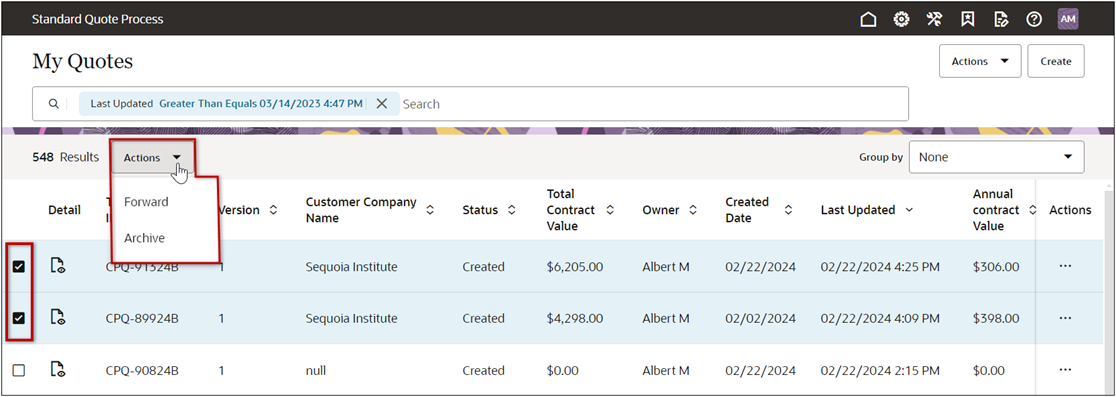
Grouping Search Results
Additionally, the new Quotes List page allow users to group the data for text and menu attributes. When a user selects an available Group by option the results are returned in grouped lists. The group with the most results is expanded and displayed. The other group lists, along with the corresponding results count, are displayed below the current grouped list.
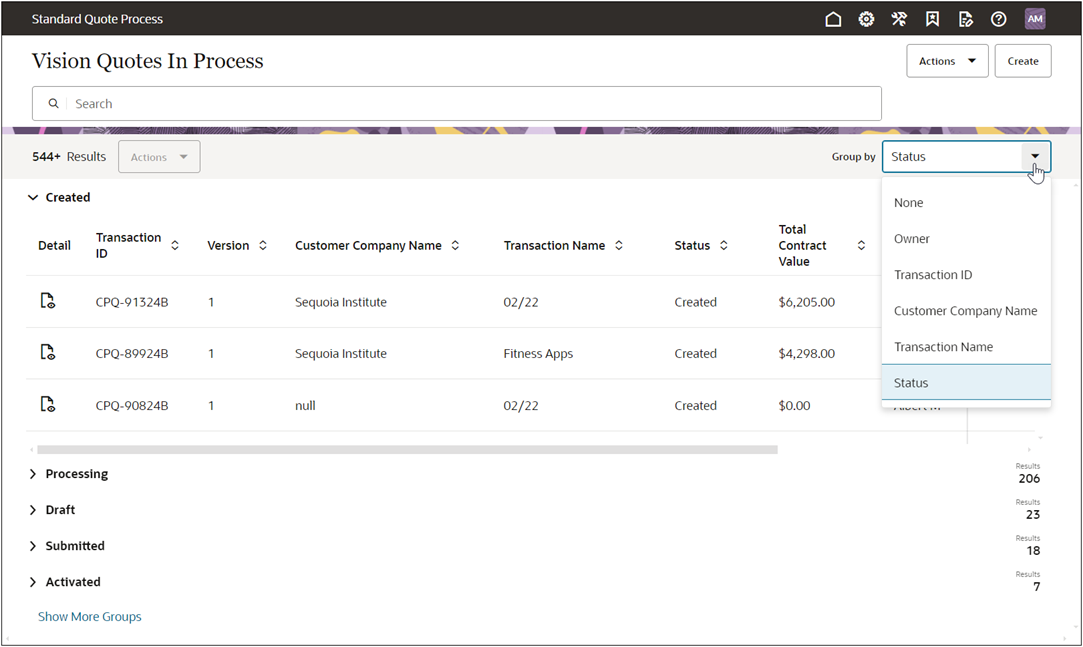
Note: Multiple transactions can only be selected when Group by is set to "None".
Saved Searches
When a user navigates to the Quotes List UI, the User Default Saved Search is displayed. If a user default is not specified the Site Default Saved Search is displayed. Commerce Text and Single Select Menu attributes mapped in the Data Columns can be used as filter inputs to the search. The user can specify criteria for the attributes, sort results using the column headers, and group results so that the search returns only those records that satisfy the criteria. Search results will be returned based on user permissions. In the Quotes List UI, the Saved Search functions replace the View Manager functions that were provided in the legacy Transaction Manager. When the Quotes List UI is enabled, existing legacy Transaction Manager views will be available as Saved Searches in the new UI. For the process type Standard Process, the Quotes List UI provides the following default saved searches.
-
My Quotes returns a list of transactions that were modified in the last year. This saved search cannot be hidden, modified, or deleted.
-
My Approval Search returns transactions that are waiting in a queue pending approval. This makes it easy to enter each individual quote to approve or reject them. This saved search can be hidden, but it cannot be modified or deleted.
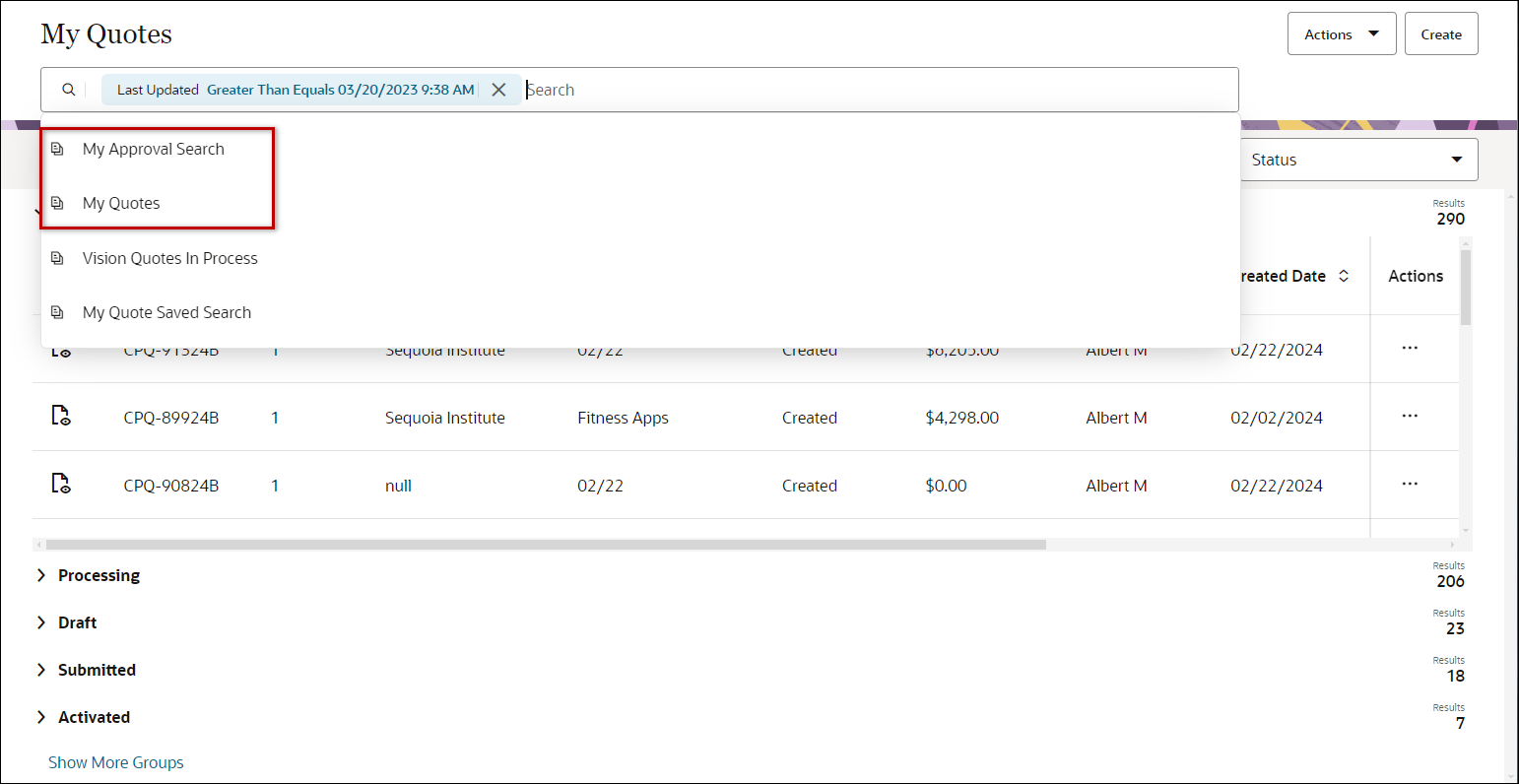
-
My Orders - returns transactions that are in the Order stage. The My Orders search is automatically generated for the Redwood Quotes UI when the Order stage is enabled in the Commerce process and deployed. This saved search can be hidden, but it cannot be modified or deleted.
-
My Agreements - returns transactions that are in the Agreement stage. The My Agreements search is automatically generated for the Redwood Quotes UI when the Agreement stage is enabled in the Commerce process and deployed. This saved search can be hidden, but it cannot be modified or deleted.

Notes:
-
If a sales user does not have access to any field used in a saved search, then the saved search will not be visible for that user.
- Folder structure functionality is replaced by Saved Searches. Users can create a new Saved Search to organize the trashed transactions as per their desired criteria.
Keyword Search
When enabled, keyword searches provide quick access to filter transactions by entering criteria directly in the search field. Keyword Search is enabled in the Data Column definition for the applicable Commerce attribute. In the following example Keyword Search is enabled for the Customer Company Name - Data Column definition. When search criteria is entered in the Search field, the matching transactions are returned and the keyword is highlighted in the results.
Keyword search operates by scanning through indexed columns, so in order for keyword search to work the data column must be indexed. Keyword search is only enabled for text attributes, allowing users to search for keywords within textual data. By default the Preferred keyword search method is set to “Contains” in Commerce Settings. The search method ‘contains’, allows for matching of keywords within the text. The other method available is ‘starts with’, which matches keywords at the beginning of the text.

Note: A keyword search is enabled in the Data Column definition for the applicable Commerce attribute. For detailed instructions, refer to Enable a Keyword Search for a Commerce Attribute.
User Actions
Unless noted otherwise, the following Quotes List actions are available for all users. For administrator functions, see the Administration section below.
Administration
![]() Enable Keyword Search for a Quote List Attribute
Enable Keyword Search for a Quote List Attribute
![]() Manage Transaction Archives View, restore, or permanently delete archived transactions
Manage Transaction Archives View, restore, or permanently delete archived transactions
Notes
Note: An updated Default Saved Search does not take effect until the user logs out, closes and re-opens their browser, and then logs in again. Alternatively, the updated Default Saved Search is available if the user logs in from a different browser.
Notes:
-
Transaction data is stored indefinitely unless archived. This includes file attachments, which are treated the same as transaction data.
- If Transaction archiving is disabled on your site open a Service Request (SR) on My Oracle Support to enable Transaction archiving.
- The default setting for cleaning up archived Transactions is 30 days after the Transaction was archived. Open a ticket on My Oracle Support to change this setting,






